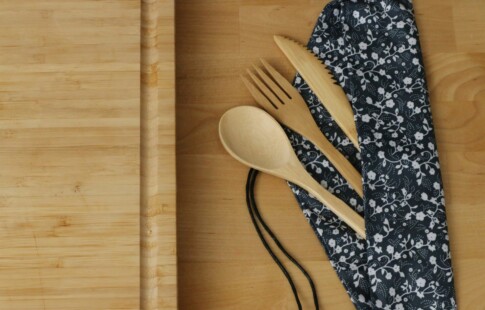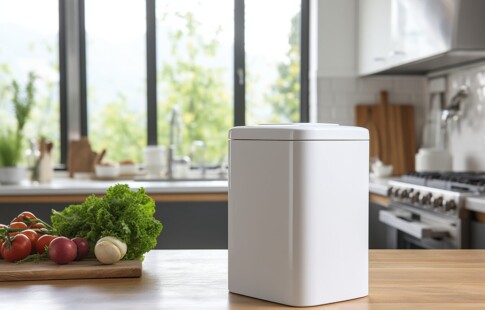
How to Transition From Non-Eco-Friendly Products
We are reader-supported. When you buy through links on our site, we may earn affiliate commission.
Store shelves and online shops are full of non-eco-friendly products. How can you use fewer of those and choose options that are kinder to the planet? Here are some good starting points.
Be Kind to Yourself During the Switch
It can be easy to feel discouraged about how many non-eco-friendly products you have in your house and use every day. But the better way to look at it is you’re committing to making a change. It’s also okay if your effort to purchase more sustainable products happens over months or years. There’s no need to do everything at once. Taking things slowly will be less overwhelming and better for your bank account.
Company leaders have only realized the importance of sustainability relatively recently. Even those that now understand it continue running businesses that primarily make non-eco-friendly products. Those realities mean it’s usually much easier to buy non-sustainable products than the other way around.
Aim to see yourself on a path of gradual progress. Know that if you’re even buying just a few more sustainable products at the end of the year than the start of it, you’ve taken steps in the right direction.
It’s also understandable if you don’t get to the point of buying eco-friendly goods across the board. It’s sometimes difficult or impossible to find them in all product categories, so don’t be too hard on yourself if you must continue using them in some cases.
Evaluate What You Can Afford
Eco-friendly items are not always the most affordable products. Perhaps that’s why a 2022 Deloitte study found people in multiple countries purchasing fewer products in that category. Data from the research found 34% of consumers who’d bought a sustainable product in the last month paid significantly more for it. Additionally, 17% accepted a lower standard of quality when doing so.
Personal financial difficulties and broader economic challenges can change people’s spending habits. If that’s happening to you, it may be necessary to take extra care in selecting which eco-friendly products you buy. For example, buying things you can reuse may make the most sense. Maybe that means buying a metal water container to refill rather than single-use water bottles.
You might also switch to reusable sandwich bags rather than buying disposable ones. Products like these typically have higher upfront costs. But they quickly pay for themselves because you’re no longer buying so many things to only use once.
Recognize That Not All Non-Eco-Friendly Products Are Wholly Bad
We’ve already discussed the need to plan a gradual move away from non-eco-friendly products. However, a similar tip worth mentioning is that you must remember that some goods broadly considered not sustainable may still have some redeeming qualities.
For example, smartphone manufacturing has a high environmental and social cost. It doesn’t help that many smartphone makers frequently release new models and don’t design their products to last as long as possible. However, that doesn’t mean you need to do away with using smartphones. The most practical thing is to keep using yours until it stops working or manufacturer support ends.
Maybe you use your smartphone to calculate how many miles you travel on your bike instead of in a car per month. It could also help you find area restaurants giving away food that would otherwise get discarded. Those are examples of how smartphones can be gateways to a more eco-friendly way of life, even if the products themselves usually aren’t sustainable.
When it’s time to get a new phone, you can consider buying a more eco-friendly option. Alternatively, think about purchasing a secondhand model. That’s a great way to give an older phone a second life and stop it from ending up as e-waste.
Prioritize Certain Kinds of Eco-Friendly Goods
Looking at a list of things you typically buy in a month shows how challenging it is to suddenly stop buying non-eco-friendly products. A realistic solution is to focus on specific categories of those products when altering your buying behaviors.
Start by thinking about your most-compelling reasons for changing what you buy. Maybe you want products that are zero-waste, cruelty-free or animal-friendly. Many eco-friendly makeup products meet those criteria and others.
Alternatively, maybe you’ve always worried about the cleaning products in your home, especially since the labels often warn how the formulas can poison marine life. Perhaps your concerns have only grown since you’re a new parent and have several pets in the home. In that case, you might start buying as many sustainable cleaning products as possible.
You’ll almost certainly find it easier to stay motivated about making the switch if doing so closely aligns with your values and ideals. It’s also more affordable to buy certain categories of products, and this method makes it easier to track your progress.
Be Careful of Greenwashing
Some people are so eager to stop buying so many non-eco-friendly products that they rush to purchase any products that seem better for the planet. However, doing that could make them fall for the tricks of companies engaging in greenwashing. That happens when brands spend more time and money marketing themselves as eco-friendly than providing products that are good for the planet.
For example, you might buy a plant-based sheet set labeled “all-natural.” Many people think that means the materials came straight from nature. However, they get synthetically altered in manufacturing plants. Companies also often use chemicals that are toxic to wildlife.
That doesn’t mean all products that seem green will mislead you. However, it does require being a conscious consumer and looking more deeply into the claims you see. That might mean looking at a company’s website to learn more about its production process and seeing whether it has a long-term history of making products that are good for the Earth.
It’s also important to avoid impulse buys when you want to steer clear of greenwashed products. Seeing the phrase “better for the planet” or a similar one on the packaging might make you want to immediately take the respective item home. However, it’s better to wait until you can verify more. Do that, then come back to the store to make the purchase.
Use What You Have
Waste reduction is a significant part of a sustainable lifestyle. So, even if you don’t have many planet-friendly products at the moment, that’s no reason to throw everything away and start fresh. However, now is a great time to take stock of all the non-eco-friendly products you eventually want to replace. Commit to using those up, if applicable, and then replacing them with planet-friendly stuff once you have.
You might have quite a few products not considered eco-friendly that you bought several years ago and still use because they’ve held up so well. Remember that your intention to use more planet-supporting products now is no reason to discard those. A significant part of living a green life means curbing consumption when possible.
Maybe you own a winter jacket purchased almost a decade ago. However, you now wish you hadn’t bought it because it has a goose-down filling. Put things into perspective and recognize that at least the jacket stopped you from buying numerous other outerwear pieces that likely had some unsustainable characteristics, too. If you feel uncomfortable continuing to use it, do the next best thing and donate it.
Remember, you’re aiming for a gradual phasing out of non-eco-friendly products. It’s not realistic to think you’ll go from using them one week to being completely free of them the next. And that’s absolutely okay.
Becoming a Greener Consumer Takes Time
These steps will help you start buying and using more eco-friendly products. Keep in mind that your overall journey will vary based on things like your income, motivations, and how many planet-friendly products you already use. Be patient with yourself and understand that it might take years to shift your consumerism as much as you hope. The most important thing is that you’ve decided to make positive changes now. That’s the first step to making lasting changes in how, what, and when you buy.
Share on
Like what you read? Join other Environment.co readers!
Get the latest updates on our planet by subscribing to the Environment.co newsletter!
About the author
Rachel Lark
Rachel serves as the Assistant Editor of Environment.co. A true foodie and activist at heart, she loves covering topics ranging from veganism to off grid living.





